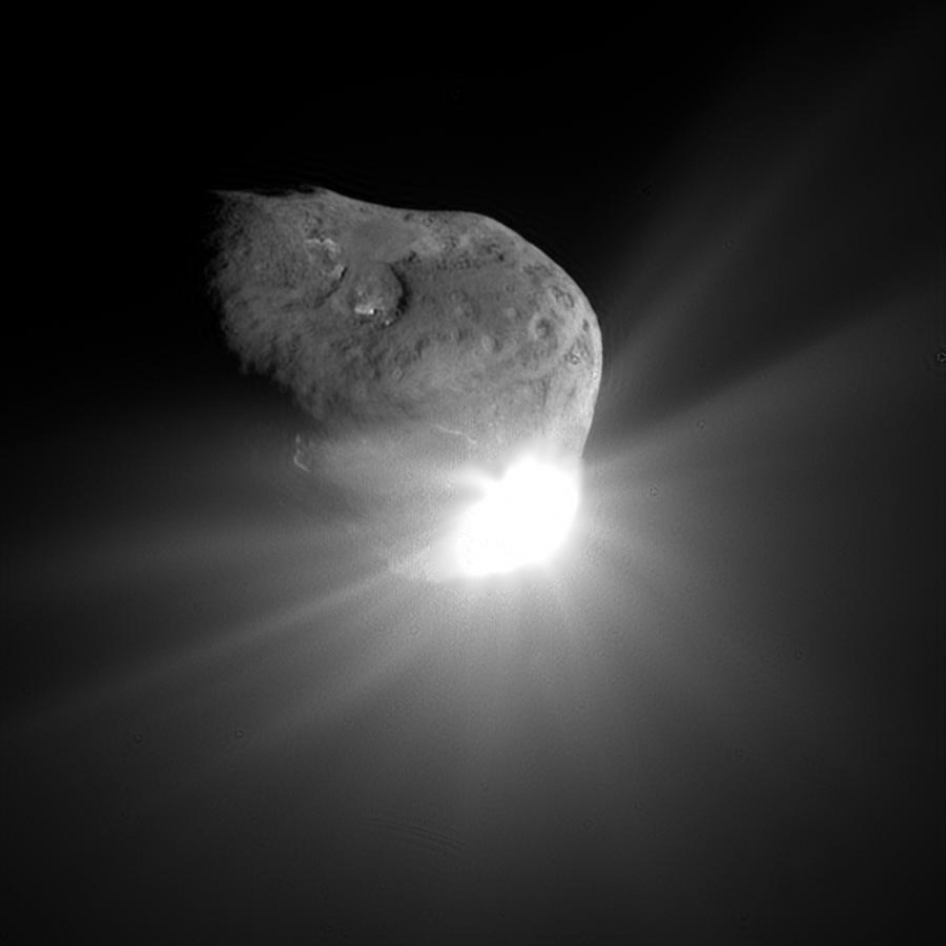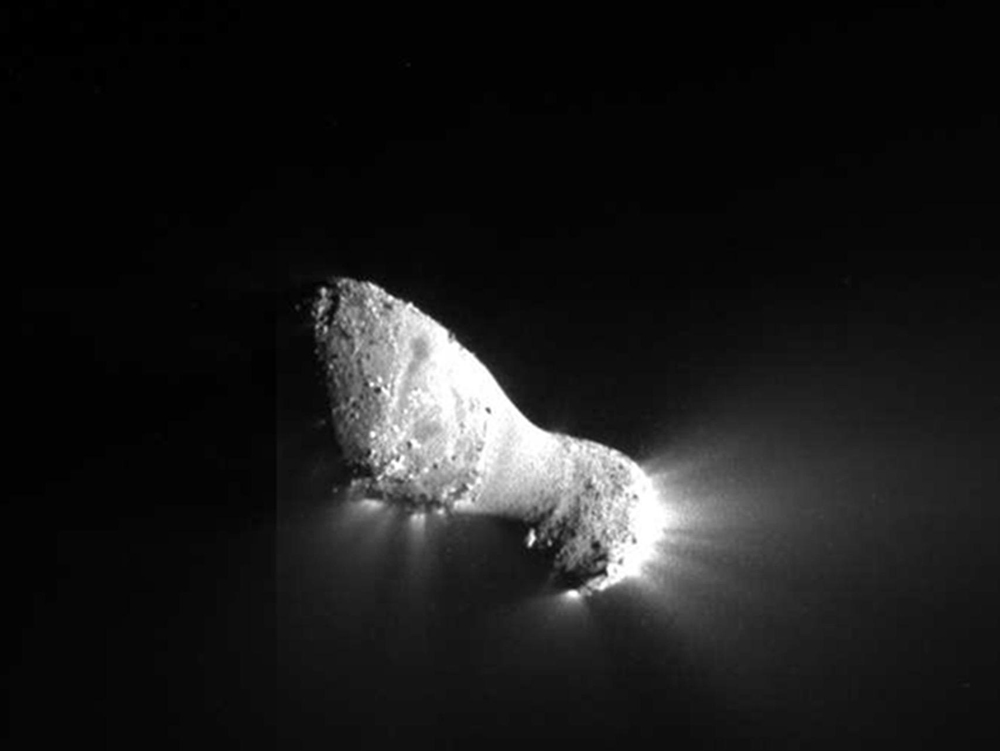
When you're watching the fireworks displays this Fourth of July, take a moment to reflect on some cosmic pyrotechnics that NASA pulled off a decade ago.
On July 4, 2005, while zooming along millions of miles from Earth, NASA's Deep Impact spacecraft released an 820-lb. (370 kilograms) probe that smashed into Comet Tempel 1 at 23,000 mph (37,000 km/h), gouging out a crater about 500 feet (150 meters) wide. (Researchers were able to estimate the crater's size when NASA's Stardust spacecraft photographed Tempel 1 during a flyby of its own in 2011.)
The Deep Impact mothership watched the powerful collision — which marked the first time a manmade object interacted with the surface of a comet — from a safe distance, studying the material blasted into space by the impactor. [Photos of Comet Tempel 1 from NASA Space Missions]
The mothership's observations revealed that the 3.7-mile-wide (6 kilometers) Comet Tempel 1 has a relatively homogeneous composition, with ices near the surface pretty much the same as those deep underground. The icy wanderer is also surprisingly light and airy.
"Measurements at the impact site suggest that the nucleus of Tempel 1 is at least 75 percent empty space, or about as fluffy as freshly fallen snow," representatives of the University of Maryland said in a statement. (Several researchers from the university, such as principal investigator Mike A'Hearn, played a large role in the Deep Impact mission.)
While the smashup destroyed the impactor probe, the mothership kept on trucking for years afterward. In fact, Deep Impact studied three more comets during an extended mission known as EPOXI (Extrasolar Planet Observation and Deep Impact Extended Investigation).

The spacecraft flew by Comet Hartley 2 in 2010, returning spectacular images that revealed the object resembles a chicken drumstick. The probe also observed (from afar) Comet Garrard in 2012 and the "sungrazing" Comet ISON in 2013.
Get the Space.com Newsletter
Breaking space news, the latest updates on rocket launches, skywatching events and more!
The $330 million Deep Impact mission launched in January 2005. The spacecraft ceased communicating with Earth in August 2013, and NASA stopped trying to revive the probe a month later.
Up-close comet investigation didn't die with Deep Impact. In August 2014, the European Space Agency's Rosetta probe became the first craft ever to orbit a comet. And in November, the Rosetta mothership dropped a solar-powered lander called Philae onto the surface of the comet, which is named67P/Churyumov–Gerasimenko (67P for short).
Phile went dark shortly after touching down due to a lack of sunlight, but the lander emerged from hibernation last month (Comet 67P has gotten much closer to the sun).
Follow Mike Wall on Twitter @michaeldwall and Google+. Follow us @Spacedotcom, Facebook or Google+. Originally published on Space.com.
Join our Space Forums to keep talking space on the latest missions, night sky and more! And if you have a news tip, correction or comment, let us know at: community@space.com.

Michael Wall is a Senior Space Writer with Space.com and joined the team in 2010. He primarily covers exoplanets, spaceflight and military space, but has been known to dabble in the space art beat. His book about the search for alien life, "Out There," was published on Nov. 13, 2018. Before becoming a science writer, Michael worked as a herpetologist and wildlife biologist. He has a Ph.D. in evolutionary biology from the University of Sydney, Australia, a bachelor's degree from the University of Arizona, and a graduate certificate in science writing from the University of California, Santa Cruz. To find out what his latest project is, you can follow Michael on Twitter.









